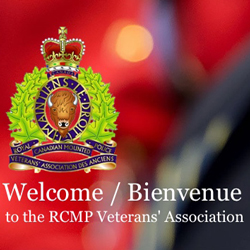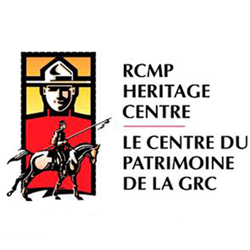Part 4 – Dispersement Of The Cavalry Draft
On July 19, 1918, Brigadier General William Griesbach (son of NWMP Superintendent Griesbach – Reg. #1) came to Shorncliffe Camp and met with the members of the Draft.
Trooper Glen described the meeting with Griesbach:
“We met in the assembly hall. A high ranking officer addressed the meeting and began by complimenting us on our efficiency and smart bearing. ‘I am afraid that I have a disappointment for you chaps. Owing to the terrible conditions of the battlefield our military commanders have decided against the use of cavalry. There will be openings in three departments, namely, Air Force, submarines, or tanks.’ Those were not exactly his own words but that was the gist of it. He also mentioned that his did not apply to senior members of the Force. That included men who had enlisted prior to last recruiting drive. They would act as dispatch riders on the battlefield. This was truly a great disappointment as we were as closely a knit group of men as could be found anywhere. Perhaps, we would never meet again. My chum and I decided to transfer to the Tank Corps, thereby dashing as we thought, all hopes of serving with the Mounties, even if we both came through alive.”[1]
After General Griesbach speech, Trooper Glen would often visit the wharf at Flokestone and watched the unloading of the wounded from the western front. “The casualty list was increasing every day and replacements were woefully short. A large percentage of whom were stretcher cases, and that awful wailing of the ambulances, caused me to shudder and wonder how it was all going to end.”[2]
According to Major Jennings “The matter of choosing the Officers and NCOs for the (Special) Squadron (RNWMP) was a difficult one, as all ranks were anxious to go with the Squadron.”[3] Based on Major Jennings’ selection and the request of volunteers, the Draft members were deployed to various elements of the Canadian Expeditionary Force:
- June 1918 – 100 recruits of the draft were deployed to the Royal Canadian Dragoons.
- October 6, 1918: Special Squadron RNWMP: (4 troops) consisting of 6 officers and 151 men transferred to the Canadian Light Horse Brigade in France. The majority of members is this group were seasoned veterans of the Force. It was this group that would later become known as “A” Squadron RNWMP.
- October 7, 1918: 3 officers, 8 NCOs and 300 men transferred to the 1st Canadian Tank Battalion at Wool Dorset.
- October 18, 1918 – Lieut. Townsend transferred to Canadian Light Horse.
- November 3, 1918 – Lieuts: Allard, Ryan, Irvine and MacDowell transferred to the Special Squadron Canadian Light Horse.
- November 6, 1918 – Lieut. Proby was transferred to the Royal Canadian Dragoons while Lieuts. LaNauze and Mead were transferred to the Fort Garry Horse.
Deployment to – 1st Canadian Tank Battalion
According to Major Jennings “September 18 – by this time the Overseas authorities had decided to from one or more Tank Battalions, and it was proposed that the nucleus of this 1st Tank Battalion be formed from member of the (RNWMP Cavalry) Draft not included in the (Special) Squadron, but that any NCOs of the Squadron and any Officer not allotted to the Cavalry Brigade, would be permitted to volunteer for service in the Tank Battalion.
The men were informed that if they did not care to go to the Tank Battalion, they would be drafted as general reinforcements to the Infantry.””[4]
On October 7, 1918, Draft members, volunteering for the Tank Battalion, were transferred to their new quarters at Imperial Tank Training Camp near Wareham in Dorset England. According to Trooper Glen, “The camp was built on the edge of a huge swamp and the huts were of lumber. About a quarter of a mile away was a prisoner of war compound. The officers and NCOs were a splendid bunch of men with the exception of one, a sergeant major.”[5]
The Sergeant Major “whom nearly all the men and officers in the camp detested. He had a surly disposition and would almost snap a person’s head off when asked a civil question. As all senior members of the Mounted had gone to France I wondered why not him. Anyhow, some of the boys decided to punish him, and the manner in which they carried it out almost made me sick to the stomach. The night of the officers’ visit to our hut it was raining. The men, all masked, stole stealthily to the Sergeant Major’s cubicle, gagged and bound him and dragged him to the pool below the manure pile into which they tossed him, but not before he managed to free himself of the gag and bite one of his attackers. But what puzzles me is why, if the officers searched all of the huts that night they did not find any wet clothing, or on the following day, any trace of a bite on hands or fingers. The only conclusion that I can arrive at, and I hope that I am wrong, is that the officers were in sympathy with the wrongdoers. [6]
Each tank was armed with a four-pound cannon and machine gun with a crew of two. “The interior of the tanks were crowded and the roofs were low. We moved around in a crouched position and should a person forget and straighten up suddenly, he ran the risk of having his ears misplaced by his hard hat.”[7]
The 1st Canadian Tank Battalion had completed their training and were in the process of being shipped off to the western front when the Armistice was declared.
Deployment to – Special Squadron RNWMP
With the arrival of additional cavalry horses, the Special Squadron RNWMP continued with their cavalry training.
According to Major Jennings’ report “On September 30th, I received orders to have the Squadron mobilize, and on October 2nd, the first inspection of the complete Squadron took place. On October 4, 1918, this squadron was inspected by Colonel Smart (General Officer Commanding the Shorncliffe base).”[8] On the following day, Major Jennings received the following telegram from Sir Richard Turner V.C. General Officer Commanding Canadians in England:
“Advise Commanding Officer Royal North West Mounted Police Squadron proceeding overseas. Regret through absence in France have been unable to get down to see squadron before proceeding overseas. Convey my very best wishes to Officer Commanding Officers and other ranks for future success.”[9]
On October 6, 1918, the Special Squadron departed Shorncliffe in a troop train bound for Southampton. Upon arriving at Southampton, they embarked on the S.S. St. Denis. On board the ship with the squadron, there was a mixed cargo – guns, horses, planes, fodders, munitions and American troops. The ship was bound for the French port of Harvre and arrived there the following morning.
Upon landing at Havre, the squadron marched up the muddy roads to a resting camp where they entrained on October 9th for their journey to Arras, France. After detraining, the squadron received orders that they were to be attached to the Canadian Light Horse (CLH) as their “D” Squadron. Other squadrons of CLH were:
- “A” Squadron – 19th Alberta Dragoons;
- “B” Squadron – 16th Saskatchewan Light Horse; and
- “C” Squadron – The 1st Hussars.
On October 12, 1918, the RNWMP Squadron officially joined the Canadian Light Horse on the west bank of the canal on the western outskirts of Cambrai France. The Battle of Cambrai was in the closing stages.
During this battle, Sergeant Major George Taylor ‘Paddy’ Aitken (ex-member – Reg. #4174) of the Canadian Light Horse had been killed in action on October 10, 1918. A detachment of “D” Troop of RNWMP members were sent to the burial of Sergeant Major Aitken.
On October 13, 1918, the CLH moved to Marquion for a rest and the RNWMP Special Squadron was held in readiness to relieve parts of two Squadrons who were on the front lines.
On October 14, 1918, the Canadian Corps Commander decided that the Special Squadron RNWMP would be used to assist the Assistant Provost Marshal’s Branch in the handling of captured German-Austrian prisoners and assist with traffic control.
At 0900 am on October 18, 1918, the mounted RNWMP Special Squadron were inspected by Lieut. General Sir Arthur Currie (Canadian Corps Commander) and was accompanied by H.R.H. The Prince of Wales. Currie addressed the squadron by stating that he was glad they had at last arrived, knowing they had desired so long to come to France.
On October 23,1918, the CLH and the RNWMP Special Squadron were deployed to the outskirts of Valenciennes France. The following day, the Special Squadron was ordered to provide men as dispatch riders for the 2nd and 3rd Canadian Divisions. Troop #2 (under the command of Lieut. Dann) was sent to the 2nd Division and Troop #3 (under the command of Lieut. Wood) was sent to the 3rd Division. These two troops remained with these duties until the signing of the Armistice.
The remaining Special Squadron RNWMP members remained at Somain France and delegated NCOs and men to different points back from the front line to collect recently captured prisoners-of-war and escort them to various prisoner-of-war camps.
On October 28, 1918, the Corps Commander ordered that the Special Squadron RNWMP be detached from the CLH and became an independent unit called “The Royal North West Mounted Police Squadron.” This new unit would be attached to the Assistant Provost Marshal. It was with this order, the “A” Squadron RNWMP was created.

Copy of the Canadian Expeditionary Force order outlining the creation of the
RNWMP Squadron and would hence be known as “A” Squadron RNWMP.
(Source of document – Canadian Archives of Canada).
On November 4, 1918, the “A” Squadron RNWMP moved to Haveluy, France and then to Valenciennes France on November 12, 1918.
On November 15, 1918, #1 Troop (under the command of Lieut. Acland) were deployed for prisoners-of-war escort duties 12 kilometer west of Mons Belgium and from here they were deployed to accompany the Canadian Corps Headquarters group to Godesburg Germany – located south of Bonn.
On November 26, 1918, the Squadron was ordered to Fleurus Belgium. Once there, members of #4 Troop (under the command of Lieut. King) were deployed to take possession and control of all surrendered German/Austrian arms and munitions in the area.
On December 15th 1918, the Canadian government decided to immediate recall the RNWMP Squadron from overseas for pressing duties in Canada. The Honourable Newton Rowell (President of the Canadian Privy Council in Ottawa) sent the following cable about the recalling of all members of the RNWMP Squadron and all ex-members of the Force:
“Government has decided to re-establish without delay Royal North West Mounted Police to full strength for important service in Canada. It therefore desires the return to Canada of all Officers and other ranks of its Overseas Cavalry Draft who were members of the Force prior to tenth April, one thousand nine hundred eighteen. Also those in Draft who engaged after April tenth and are now desirous of continuing service in Canada. Also ex-members of the Force now in other Units of C.E.F. who wish to re-join Force. Would also request British Authorities to permit ex-members in Imperial Units who so desire to re-join. Suggested that all should be transferred to “A” Squadron Royal North West Mounted Police. Conditions of service unchanged, except that pay of all ranks except Commissioned, increased fifty cents per diem, separation allowance ceases at end of war and permanency of Force assured. Major Jennings authorized to make re-engagement for the Force and will be sent details instructions. This cable is sent with the approval General Mewburn and Commissioner R.N.W.M.P.”
Vernon Kemp provided an insight to this urgency –
“Our squadron was at Valenciennes, close to the Franco-Belgian border, when the Armistice was signed in November 1918. We firmly expected, as comparatively new arrivals in France, to be among the last to leave. Great was our joy when, early in the new year, we received instructions to return home. This decision was influenced entirely by serious domestic conditions which had developed in Canada.
A spirit of unrest was abroad in the land. On the prairies, where a large segment of the population was of European origin, the progress of the Bolshevist revolution in Russia a year earlier had been watched with keen interest. A few revolutionaries saw the possibility of similar action in Canada. Relations between management and labour stood in urgent need of wide-scale improvement. Intelligent labour leaders, knowing of this and the power of legal strike action to effect reform, toured the country to arose the workers. The revolutionary agitators planned similar tours for the purpose of prodding the restless workers into militant acts, which could pose a serious threat to the security of the nation. The general strike foreseen by labour leaders would then be converted into the drastic action visualized by the extremists.”[10]
On December 28, 1918, Major Jennings received these instructions. To proceed with these orders, he had meetings at the Canadian Corps Headquarters and later departed for England on January 18,1919 where he would coordinate the mobilization of the “A” Squadron RNWMP members and all interested ex-members of the Force.
It was Major Jennings task to seek arrangements to:
- receive the re-engagement of ex-members of the Force;
- coordinate the transportation of ex-members from various locations in England and in Europe to the Kinmel Park Campe in Rhyl England;
- arrange for troop ships to transport ex-members back to Canada; and
- to obtain train transportation from the point of debarking of the troop ship to Regina.
The original intent was to transport all ex-members back to the “Depot” barracks in Regina where they would be demobilized from the CEF. Then these members would reengaged into the Force and be issued their new kit and clothing. In Regina, members would be deployed to locations under the direction of Commissioner Bowen Perry.
The quick mobilization of RNWMP Squadron members and ex-members was hampered by illness:
- 19 cases for the RNWMP Squadron in Namur Belgium; and
- 32 cases of mumps in the Tank Battalion at Bovington Camp Wool, England.
In addition, 140 of the Cavalry Draft members deployed to various Cavalry Regiments in Europe were unable to make it back to England prior to May 10, 1918. Of the Cavalry Draft members deployed to the Canadian Tank Battalion, only 48 applied to return to Canada and be re-engage in the Force. The rest of these men preferred to return to Canada and assume their occupation prior to joining the Cavalry Draft RNWMP.
With the delay in arrival of various ex-members, the departure from England was undertaken in three stages:
- March 1, 1919 – S.S. Adriatic departed Liverpool to Montreal with Capt. H.M. Newson with 9 officers and 155 other ranks;
- April 2, 1919 – S.S. Megantic departed Liverpool to Montreal with Lieut. Acland with Lieut. MacDowell and 65 other ranks. This group consisted of 9 re- engagements: 8 from Canadian Army and 5 from the British Army; and
- May 10, 1919 – Troop Ship S.S. Olympic departed Southampton for Halifax and consisted of Major Jennings, Lieut. Proby and 163 other ranks: including 6 ex- members from the Imperial Army and 1 ex-member who engaged in England.
Trooper John Glen described his return voyage on-board the S.S. Olympic –
“We board the vessel immediately and were assigned our quarters. What a difference there would be in our voyage back as compared with the voyage coming over. The interior of the ship was bright, clean and sanitary. As there would be civilian passengers going back the two upper decks were reserved for them. There was feverish activity everywhere. Train after train pulled into the dock and disgorged its consignment of Canadian soldiers with very little delay backed out to make room for another.”[11]
The last contingent arrived in Halifax on May 16, 1919. After disembarking from the ship, Trooper John Glen recounted the newspaper coverage greeting him –
“Canada at that time was passing through troublesome times. The headlines of the papers fairly screamed with accounts of strikes and riots. Winnipeg apparently was the worst trouble spot in the whole Dominion. A powerful group of Communists, or Reds, as they were called at the time, were distributing their literature to eager groups in the larger cities who, as the saying goes, were dancing to Winnipeg’s music. To restore law and order, to the city, was our assignment. This was the reason for all the haste in” returning to Canada.
With the Winnipeg General Strike underway, Major Jennings received orders on May 19, 1919 that his contingent was to be demobilized from the Canadian Expeditionary Force in Winnipeg and would be immediately re-engaged into the Force. Upon arriving in Winnipeg on May 20, 1919, the members of this contingent were transported to Fort Osborne Barracks in Winnipeg. It was on May 21, 1919 at these barracks that the contingent members were demobilized from the CEF and re-engaged into the Force. Sixty-five Force horses had been transported from Regina to the barracks for use by these re-engaged members.
It was these Force members and a supplementary group from “Depot” Division that were involved in suppressing the Winnipeg General Strike.
CAUSALITIES
From the creation to the demobilization of the Cavalry Draft RNWMP, there were several casualties and deaths:
- Reg. #6886 – Constable E. Kirkpatrick died in hospital in August 1918 of peritonitis;
- Reg. #7273 – Constable W.A. Pearson died as a result of a motor vehicle accident in London in December 1918;
- Reg. #7171 – Constable V. Ward died of Spanish Influenza at Shorncliffe Camp in November 1918;
- Lieut. Ryan sustained a serious injury to his ankle while on duty in Godesburg Germany by his horse slipping on the pavement;
- Reg. #4829 Corporal sustained a leg injury when his horse lost its footing; and
- Lieut. H. Townsend was gassed while serving with the Canadian Light Horse while in action at Valenciennes France.
TRIBUTE PAID TO FORCE MEMBERS
On October 6, 1919 at Regina, the His Royal Highness The Prince of Wales (later King Edward VIII) made an address to members of the Force at the “Depot” barracks:
“It is not only a real pleasure, but an great privilege to me to inspect you on parade this morning, and to visit the depot of the Royal North West Mounted Police, though this is by no means my first introduction to the force, which I have seen a great deal throughout my travels in the west, and I have been very much impressed by it, particularly by the mounted escorts and guards that it has furnished for me in all the big cities.
I am interested in the history of the force; how it was organized 46 years ago at a time when treaties were being made with the Indians, whereby the lands of the Northwest were made available for settlement by the white people. So well has it administered justice between all parties, that I has won for itself respect and the confidence of both white people and Indians, and no new country has ever been opened up with less crime and violence than this Northwestern Territory.
Up in the Klondike, when wild and lawless men thronged the Yukon gold diggings, life and property was as safe in the care of the Royal North West Mounted Police as in any other part of the Dominion, and the splendid police work which they have done and continue to do in the frozen wastes of the north, under the most trying conditions of hardship and privation, is recognized and appreciated everywhere today.
I know that at the declaration of war, the whole force wanted to join up, through that was naturally impossible. The first to be allowed to go were many imperial reservists who have always constituted a large percentage of its members. Then, by degrees, men could be spared, and served in the Canadian cavalry, infantry and other units, and I know many of the last joined men are war veterans.
I was with Sir Arthur Currie, Canadian Corps Commander, when he inspected (October 18, 1918 at outskirts of Cambrai France) the Royal Northwest Mounted Police squadron when they arrived in France a year ago, so that the war records of the force have been of the same high standard as its records in the past.
The Royal Northwest Mounted Police is a splendid force, magnificent traditions, whose fame is as wide as that of the Dominion itself.
I know the men of the force of to-day are proving themselves worthy of those traditions and will ever uphold them.”[12]

[1] Glen, John, “G. Division: A Tale Of The Royal North West Mounted Police.” – page 41-42.
[2] Glen, John, “G. Division: A Tale Of The Royal North West Mounted Police.” – page 42.
[3] Jennings, George – “Report on RN.W.M.P. Overseas Cavalry Draft and R.N.W.M.P. Special Squadron, France” to the Commissioner dated July 7, 1919. – page 12.
[4] Jennings, George – “Report on RN.W.M.P. Overseas Cavalry Draft and R.N.W.M.P. Special Squadron, France” to the Commissioner dated July 7, 1919. – page 11.
[5] Glen, John, “G. Division: A Tale Of The Royal North West Mounted Police.” – page 42.
[6] Glen, John, “G. Division: A Tale Of The Royal North West Mounted Police.” – pages 49 – 50.
[7] Glen, John, “G. Division: A Tale Of The Royal North West Mounted Police.” – page 44.
[8] Jennings, George – “Report on R. N.W.M.P. Overseas Cavalry Draft and R.N.W.M.P. Special Squadron, France” to the Commissioner dated July 7, 1919. – page 12.
[9] Jennings, George, “Report On R.N.W.M.P. Overseas Cavalry Draft and R.N.W.M.P. Special Squadron, France” report dated July 7, 1919 – page 12.
[10] Kemp, Vernon, “Without Fear, Favour or Affection: Thirty-Five Years With The Royal Canadian Mounted Police” – Longmans, Green and Company (1958) – page 65.
[11] Glen, John, “G. Division: A Tale Of The Royal North West Mounted Police.” – page 32.
[12] HRH Prince of Wales (later King Edward VIII) – “The Prince Of Wales Address To The R.N.W.M.P” – 1919 edition of the Scarlet & Gold Magazine – page 57.


 December 2, 2013
December 2, 2013 




















